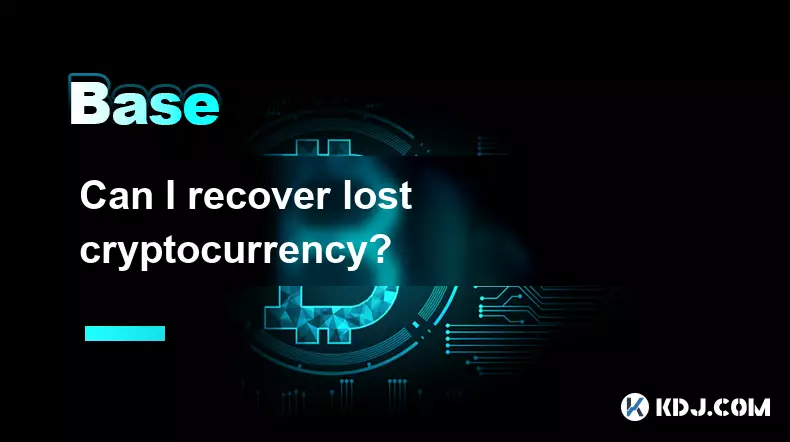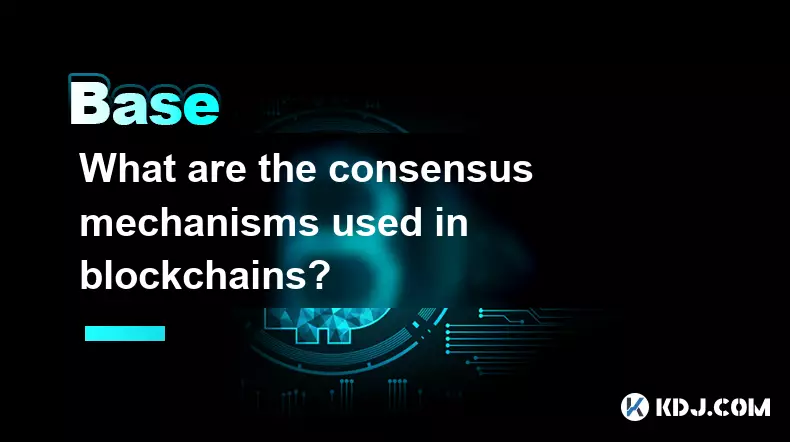-
 bitcoin
bitcoin $109667.069529 USD
-3.03% -
 ethereum
ethereum $3936.685804 USD
-4.07% -
 tether
tether $1.000493 USD
0.01% -
 xrp
xrp $2.771823 USD
-4.74% -
 bnb
bnb $957.805027 USD
-5.34% -
 solana
solana $196.735100 USD
-6.68% -
 usd-coin
usd-coin $0.999727 USD
-0.01% -
 dogecoin
dogecoin $0.227355 USD
-5.12% -
 tron
tron $0.335205 USD
-0.81% -
 cardano
cardano $0.779256 USD
-3.59% -
 ethena-usde
ethena-usde $0.999900 USD
-0.06% -
 hyperliquid
hyperliquid $42.492095 USD
-6.61% -
 chainlink
chainlink $20.501853 USD
-4.34% -
 avalanche
avalanche $28.952606 USD
-11.21% -
 stellar
stellar $0.356038 USD
-3.93%
What's the difference between mining and staking in Web3?
Staking offers an energy-efficient, accessible alternative to mining by rewarding users for holding and validating crypto, reducing environmental impact.
Sep 19, 2025 at 03:36 am

Mining: The Proof-of-Work Mechanism
1. Mining is a consensus mechanism used primarily in blockchain networks that operate under Proof-of-Work (PoW). In this model, miners use powerful hardware to solve complex cryptographic puzzles. The first miner to solve the puzzle gets the right to add a new block to the blockchain and receives a reward in the native cryptocurrency.
2. The computational work required ensures network security by making it extremely costly for malicious actors to manipulate transaction history. Bitcoin is the most prominent example of a PoW-based blockchain relying on mining.
3. Mining demands significant energy consumption due to the intensive processing power needed. This has led to growing environmental concerns and criticism over its carbon footprint, especially as mining operations scale globally.
4. Participants need specialized equipment such as ASICs (Application-Specific Integrated Circuits) or high-end GPUs. These devices are expensive and often require continuous maintenance and cooling infrastructure.
5. Rewards are distributed based on computational contribution. Miners who contribute more hashing power have higher chances of earning block rewards, creating a competitive environment.
Staking: The Proof-of-Stake Alternative
1. Staking operates under the Proof-of-Stake (PoS) consensus model, where validators are chosen to create new blocks based on the amount of cryptocurrency they hold and are willing to 'stake' as collateral. Ethereum’s transition to PoS with 'The Merge' marked a major shift toward this energy-efficient alternative.
2. Instead of solving puzzles, validators propose and attest to blocks. If they act dishonestly, their staked funds can be slashed—a strong economic incentive to follow protocol rules.
3. Staking lowers entry barriers compared to mining. Users can participate using standard hardware, often through wallet interfaces or staking pools, without needing expensive rigs or excessive electricity.
4. Returns are typically proportional to the amount staked and the duration of participation. Some networks also implement dynamic reward systems based on total staked supply and network activity.
5. Staking significantly reduces environmental impact since it eliminates the need for energy-intensive computations, making it a more sustainable option for long-term blockchain scalability.
Key Differences in Security and Decentralization
1. Mining relies on external resources—hardware and electricity—to secure the network. Attackers would need to control more than 50% of the total hashing power to compromise the chain, which is prohibitively expensive in large networks like Bitcoin.
2. Staking ties security directly to ownership of the token. An attacker would need to acquire a majority stake, which not only requires massive capital but also risks devaluing their own holdings if an attack succeeds.
3. Centralization risks differ between the two models. In mining, centralization arises from mining pools and geographic concentration of operations. In staking, wealth concentration can lead to dominance by large holders or institutional validators.
4. Network finality works differently. PoW chains rely on probabilistic finality—the deeper a block is in the chain, the more irreversible it becomes. PoS chains often implement mechanisms for faster, deterministic finality.
5. While both approaches aim to achieve decentralization and security, their trade-offs lie in resource usage, accessibility, and economic incentives shaping validator or miner behavior.
Frequently Asked Questions
How do I start staking my crypto assets?Most major wallets support staking for PoS coins like ETH, SOL, or ADA. You can either delegate your tokens to a validator or run your own node if you meet the minimum requirements. Always research the associated risks, including slashing penalties.
Is mining still profitable in 2024?Profitability depends on electricity costs, hardware efficiency, and cryptocurrency prices. For many individuals, mining at home is no longer viable due to rising operational costs and competition from industrial-scale farms. Cloud mining services exist but come with higher counterparty risk.
Can I lose money while staking?Yes. While staking generates passive income, price volatility can result in net losses. Additionally, some protocols impose lock-up periods during which funds cannot be withdrawn. Slashing events may also reduce staked balances if validators misbehave.
Does Ethereum still use mining after The Merge?No. Ethereum fully transitioned to Proof-of-Stake in September 2022. All new blocks are now created by validators who stake ETH. The network no longer supports mining, and miners had to switch to other PoW chains or exit the ecosystem.
Disclaimer:info@kdj.com
The information provided is not trading advice. kdj.com does not assume any responsibility for any investments made based on the information provided in this article. Cryptocurrencies are highly volatile and it is highly recommended that you invest with caution after thorough research!
If you believe that the content used on this website infringes your copyright, please contact us immediately (info@kdj.com) and we will delete it promptly.
- Bitwise, Hyperliquid ETF, and Perp DEXs: A New Era in Crypto Trading?
- 2025-09-26 12:25:15
- Ozak AI Price Prediction: Analyst Bull Case for $5 by 2026?
- 2025-09-26 12:25:15
- Bitcoin Price Wobbles: Support Failure and Trader Sentiment in the Mix
- 2025-09-26 12:45:16
- Dogecoin, Memecoins, and the Bull Cycle: Are We Still Barking Up the Right Tree?
- 2025-09-26 12:45:16
- Plasma Ignites DeFi: A New Dawn for Stablecoins and TVL?
- 2025-09-26 12:50:01
- Crypto Tax, Senate Showdown, and Trump Relief: What's the Deal?
- 2025-09-26 12:30:01
Related knowledge

Can I recover lost cryptocurrency?
Sep 25,2025 at 08:18am
Understanding the Nature of Cryptocurrency Loss1. Cryptocurrency operates on decentralized networks, meaning there is no central authority to reverse ...

How can I earn passive income from cryptocurrency?
Sep 23,2025 at 10:18am
Staking Cryptocurrencies for Regular Returns1. Many blockchain networks operate on a proof-of-stake (PoS) consensus mechanism, allowing users to earn ...

What are gas fees in cryptocurrency transactions?
Sep 26,2025 at 02:00am
Understanding Gas Fees in Blockchain Transactions1. Gas fees are payments made by users to compensate for the computing energy required to process and...

What are the consensus mechanisms used in blockchains?
Sep 24,2025 at 10:00am
Proof of Work and Its Role in Blockchain Security1. Proof of Work (PoW) is one of the earliest consensus mechanisms, first implemented by Bitcoin. Min...

How do cryptocurrencies impact traditional finance?
Sep 26,2025 at 05:54am
Disruption of Centralized Banking Systems1. Cryptocurrencies challenge the authority of central banks by offering decentralized alternatives to fiat c...

Is there a finite supply of Bitcoin?
Sep 23,2025 at 06:00am
Bitcoin's Fixed Supply Mechanism1. Bitcoin was designed with a hard cap of 21 million coins, making its supply finite and predictable. This limit is h...

Can I recover lost cryptocurrency?
Sep 25,2025 at 08:18am
Understanding the Nature of Cryptocurrency Loss1. Cryptocurrency operates on decentralized networks, meaning there is no central authority to reverse ...

How can I earn passive income from cryptocurrency?
Sep 23,2025 at 10:18am
Staking Cryptocurrencies for Regular Returns1. Many blockchain networks operate on a proof-of-stake (PoS) consensus mechanism, allowing users to earn ...

What are gas fees in cryptocurrency transactions?
Sep 26,2025 at 02:00am
Understanding Gas Fees in Blockchain Transactions1. Gas fees are payments made by users to compensate for the computing energy required to process and...

What are the consensus mechanisms used in blockchains?
Sep 24,2025 at 10:00am
Proof of Work and Its Role in Blockchain Security1. Proof of Work (PoW) is one of the earliest consensus mechanisms, first implemented by Bitcoin. Min...

How do cryptocurrencies impact traditional finance?
Sep 26,2025 at 05:54am
Disruption of Centralized Banking Systems1. Cryptocurrencies challenge the authority of central banks by offering decentralized alternatives to fiat c...

Is there a finite supply of Bitcoin?
Sep 23,2025 at 06:00am
Bitcoin's Fixed Supply Mechanism1. Bitcoin was designed with a hard cap of 21 million coins, making its supply finite and predictable. This limit is h...
See all articles










































































